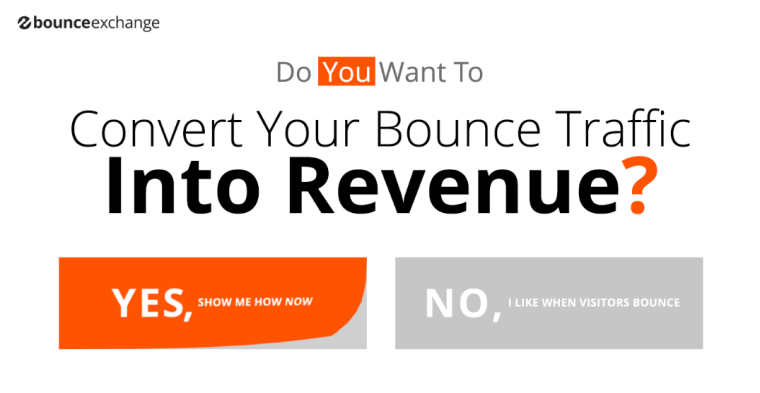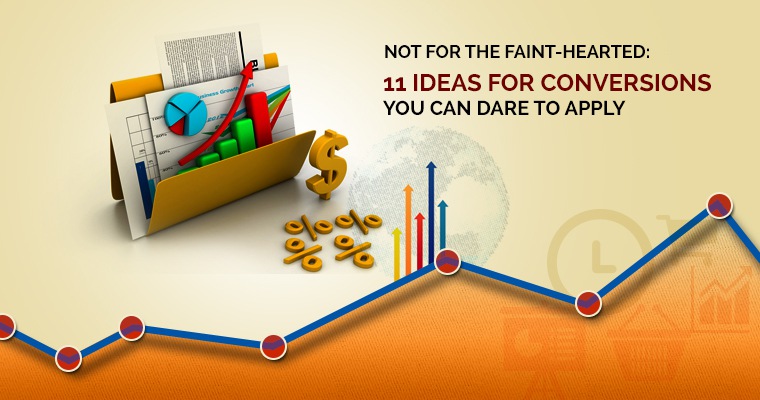You know what happens when something gets mainstay? It gets boring.
For consumers, over the years, every new ad seems to be just another ad. And there’s nothing engaging, enticing, or provoking about these ads anymore. While consumers have nothing much to lose, advertisers flirt with direct losses, which can cost them millions of dollars.
Martin Lindstorm, in his book Buyology, enumerates how companies like Ford spent millions of dollars during a season of American Idol (along with Coke and Cingular) and ended up getting absolutely nothing from that spend.
These are hard times for advertisers, and this applies to every kind of advertisers, be it a small business, startup, middle-sized business, or a large corporation.
It’s time to take the staleness out of ads. As they say, the most interesting words in English are the verbs. Most calls to action are “verbs”, but it’s time to turn up the heat and go for something more daring.
Of course, not everyone would like that kind of bravado. You could very well be pissing off a few people. But ads that piss a few people off are actually good ads.
Before you work on CTAs, ads, blog posts, and social updates, there’s much more to do from the inside out. You’ll have to change the way you think about business.
Here are 11 tips for sprucing up your CTA button microcopy, as well as a few other ideas, if you dare:
1. Use the Provoking Pop Up
If you ever visit Bounce Exchange or any of the sites that use the service, you’ll see the familiar pop up. As if pop ups weren’t debatable enough, you now have a new, pesky, irritating, and really provocative line right below the CTA button. Here’s an example:

You might or might not like it. As a marketer, you’d even feel a wee bit queasy to use such tactics. But these methods work. In fact, they work so well that Bounce Exchange got “exit intent” technology go mainstream with new competition from many other similar services. The other alternatives are:
- Conversion Monk
- MaxTraffic
- ExitMonitor
- OptinMonster
You could sit and debate whether you should use this at all. Or maybe you’d just dare and go with exit intent technology for the simple fact that at least 97% of your visitors leave your website without doing anything (Ouch, that hurts!).
2. Please Assume Your Product/Service Sucks Big Time
Harry Beckwith wrote the classic on marketing for services. It’s called Selling the Invisible: A Field Guide to Modern Marketing. Right at the start of the book, he writes:
“We think we are better than we are”
“Assume your service is bad, it can’t hurt, and it’ll force you to improve.”
Before you go out to create all those ads, CTAs, and offers, always get ready to go back to the drawing board. There could be a million ways to get better at what you do.
3. Quality, Speed, Price, and Process
No matter what you sell, there’ll be a point in your customers’ life cycle when they’ll start judging you. And although there are a million things your customers can judge your products and services on, they’ll definitely judge you on four aspects based on what they perceive and not what you claim: quality, speed or ETA, price (relative to competition or on perceived value), and how you deliver what you do.
If you aren’t able to construct your CTA anywhere around these four parameters, there’s something wrong with your offer.
4. Apply The Butterfly Effect
In 1963, Edward Lorenz (a meteorologist) went out to prove that big causes had big effects, and small causes had small effects. He went on to prove that tiny causes could have huge effects.
He called it The Butterfly Effect.
While you run your business, engage on social media, respond to queries, and write your blog posts, you’d think that you won’t lose much if you don’t respond to a question, reciprocate someone’s kind words, or resolve a customers’ support query.
The bad news is that you do lose. Small conversations, sweet nothings, and random acts of kindness have huge effects. Gregory Ciotti of Helpscout managed to curate little stories about little things that Zappos and many other small businesses do that gets people talking.
5. Don’t Think Better; Think Different
It takes an act of courage to do something different and turn the tides in an entire industry. Take Uber, for instance. It changed the way you ride. Elon Musk of Tesla now creates electric cars that are just as good as regular performance cars. Apple launched the iPhone without large keypads when the industry was addicted to the same keypads.
Within your industry, how are you different? Or are you stuck in meetings with your team on how to improve conversions by 25 percent?
Getting better earns you better results; not phenomenal results.
6. Open Shop but Run it Like Charity
You are in business. All those super posts you write are to help your customers take informative decisions while they also think that you are trustworthy, credible, and authoritative. Your social engagement gets you closer to your present and potential customers. Your strategic email marketing helps you to nurture leads.
All that’s fine. But learn to give. Don’t talk about yourself. Don’t write stories where you are the hero.
It’s a hard pill to swallow, but write for your customers. Make them the hero. Online marketing is a multi-starring Hollywood flick.
Give things away. Put the spotlight on your customers. Shower genuine praises. Write stories about them.
It’s just not about you.
7. We Are All in Business; We Sell Relationships
Before you go nuts about you’re A/B testing, think about relationships.
You aren’t really selling products; you are selling solutions. Every time your product solves a problem well a relationship is formed.
You aren’t selling services. Once again, you are selling solutions. Your expertise helps solve problems and your experience or skill is assumed.
What cements the deal is the relationship you build.
How hard do you work to build those?
8. Do What Others Can’t Do
Can you guess what makes for the most compelling CTA? It’s not the button size, conversion-centric design, landing page, or the copy, although these things all matter.
The most compelling CTA is the one that promises something your competition can never do. To get bold here is to “Win Without a Fight” as the folks at McGladrey & Pull put it, following Sun Tzu’s advice.
If everyone offers an eBook in exchange for an email address, go and offer a free trial for life.
Think about what you can do. You’ll be surprised.
9. Marketing is Not a Job; It’s a Passion Act
Try running marketing campaigns like it’s a job you have to do and you’ll see your campaigns won’t get you much.
Some of the most effective campaigns are also some of the most passionate ones. Tactics are good. They are the middle, the end, and the beginning of every strategic execution. But tactics are loose canons. They can backfire.
Passion always helps you outperform brilliant tactics executed marginally.
Go do a test: Launch a passionate campaign and see if “Submit”, “Click here”, and “Download” can ever be a part of your lexicon.
10. Patience Kills You
They say, “Patience is a virtue.” It certainly is.
But you aren’t from the Rockefeller family, are you? You can’t just sit enjoying a sea of wealth.
You have a business to run. There’s ad spend, there’s ROI, and cash that has to flow (more inbound than outbound).
Instead of just being patient, move like a shark. Always keep hustling.
If you write a blog post, reach out to every person you’d have mentioned in the post and tell them that they have been mentioned. Find ways to spread the word. If you launched a landing page, push it out over your social networks. Get people to visit.
Be patient while always moving like a shark.
11. Stop the “Big Data” Obsession
Modern marketers love “big data”. Throw a statistic and it’s easy to see why what you say suddenly becomes credible. But then, even hard science goes soft. The aura of science has a way of playing with our minds–it is persuasive, final, and seems infallible.
But customers’ buying behaviors is barely science. It skirts around science, art, sociology, personal preferences, social proof, and a whole lot more. Conduct your tests; make decisions based on data, and all this gives you a great framework to work on.
But give way to gut feelings. Planning is an art.
Let your heart write the copy; not data.
Over to You
The over arching theme here is to give way to gut feelings and convert yourself before you attempt to convert others. You have everything going for you – technology, information, and relationships. Find ways to leverage these into influencing the emotions that drive your customers.
How are you working on your campaigns? What are you doing differently? Share your thoughts in the comment section below.
Image Credits
Featured Image: Created by author for SEJ
Post Image: Screenshot taken August 2014




